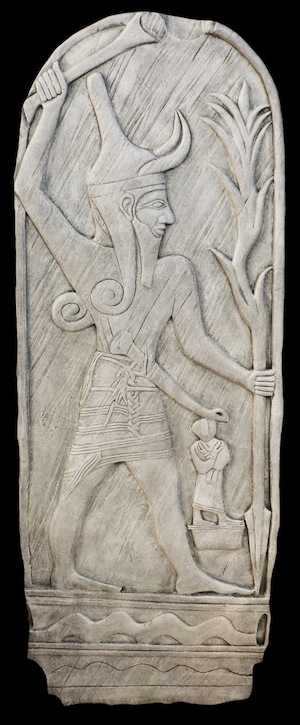Semitec

Baal
Near Eastern (Canaanite/Semitic)
replica: by artist Carrie Allen
gift of: the Nasser Family
date of the original: 18th-15th century BC
provenance of the original: western wing of the Temple of Baal, Acropolis, Ugarit (Ras Shamra); now in the Louvre, Paris
description: The god Baal standing with a club in his raised right hand and a lightning bolt/spear in his left; a smaller figure stands under Baal’s dagger. Plaster replica; limestone original. Height 151 cm, width 51 cm, depth 4 cm.
Baal was a Canaanite fertility deity who later emerged as a rain god. Thus he became known as a rider of clouds, most active during storms.
Although the most vigorous and aggressive of the gods, he was the one on whom mortals depended most. Baal’s disappearance into the netherworld with the rainclouds was believed to bring about the dry summer. The cult of Baal celebrated his death and resurrection annually.
The eclectic artistic style represented by this panel grew out of a maritime livelihood. The Canaanites developed permanent cities along the coast of modern-day Lebanon. The items they produced were for Mediterranean and Near Eastern clients. By creating art that had an unusual combination of decoration, they achieved stylistically attractive and symbolically recognizable goods. Egyptian influence is apparent in this carving of Baal in his “smiting” pose.